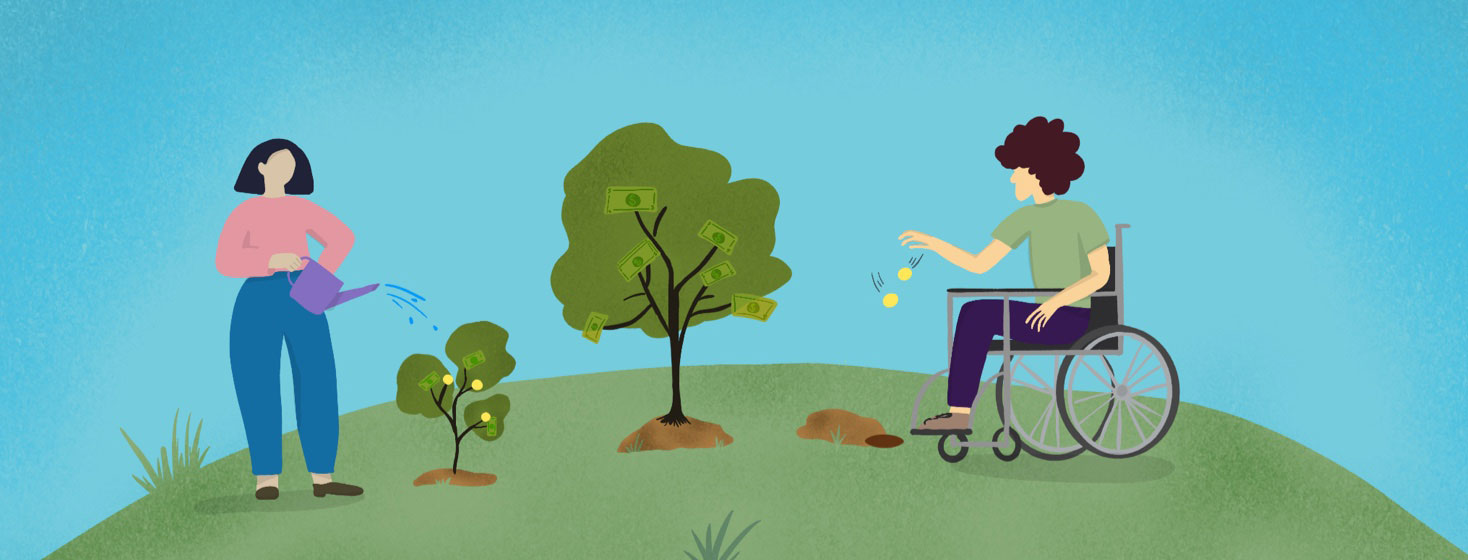ABLE Account Information
Let’s talk about saving money while being on government assistance in the United States. I am on social security disability which is different from supplemental security income but still riddled with rules and exemptions. My state requires me to stay under $2000 in savings and liquid assets before it impacts my medical benefits.
Having a limit like this makes it extremely difficult to save money in my own bank or savings account for an emergency. This is because I could lose those benefits if I have over $2000 by the end of the month.
My entire life, it has been a concern for me that I might make too much money to qualify for government supplemented medical care and too little to afford it on my own.
What are ABLE accounts?
Then, in 2014 Congress passed the ABLE Act (Achieving a Better Life Experience). This allows disabled people a way to save for themselves or have family save for them so they can have funds to use for their future life experiences.
ABLE accounts are available in all states, and if one is not based in a state, many other states allow signups from out of state to allow coverage for everyone who qualifies.
ABLE accounts are not like bank accounts. It takes longer to deposit and withdraw funds, but funds in the account do not count toward benefit assets up to a yearly limit.
They also earn interest depending on how the funds are invested in the account. ABLE funds can be used by the account owner to fund expenses like health needs, education, food, housing, and other things needed to improve quality of life.
Building my savings with limited income
Limited incomes can make it extremely hard to save, but I gave a "give gift" link to my friends and family when I opened my ABLE account. They wished the ABLE account existed when I was younger and they could have put more tax-exempt funds in for me over the years.
I told them if they wanted to give me a birthday gift or any other gift throughout the year that they could give money there to help build my savings. I am very privileged in that they did just that. And with their help, I was able to start a small saving that I contributed to for a few years. I was able to have access to when I needed to put a downpayment on my accessible vehicle.
The down payment was more than $2000 and without the ABLE account, I would have had to risk losing my medical benefits to try to improve my life with quality transportation. The van that I had worked and the motor ran, but it was extremely unsafe for me and possibly even hazardous to my health. But that’s another story for another day.
Extra monetary assistance and a safety net
The ABLE account made it possible for me to improve my life without risking my benefits.
I do understand that when you are living on just $800 a month of SSI, the thought of saving seems impossible. But even $5 a month in a savings account that draws interest can make a difference when it builds over time.
Parents can start ABLE accounts for their children’s future use as adults and it is a great tool to have just in case something happens and their adult children need extra monetary help.
Having this safety net of available funds has lifted so much pressure off my shoulders as a disabled person living in the U.S.
Thanks to my ABLE account, I no longer have to worry about having too much money saved and can instead think about how to make some money to put into my account and make life even better in the future!
For more information, visit the ABLE National Resource Center.

Join the conversation